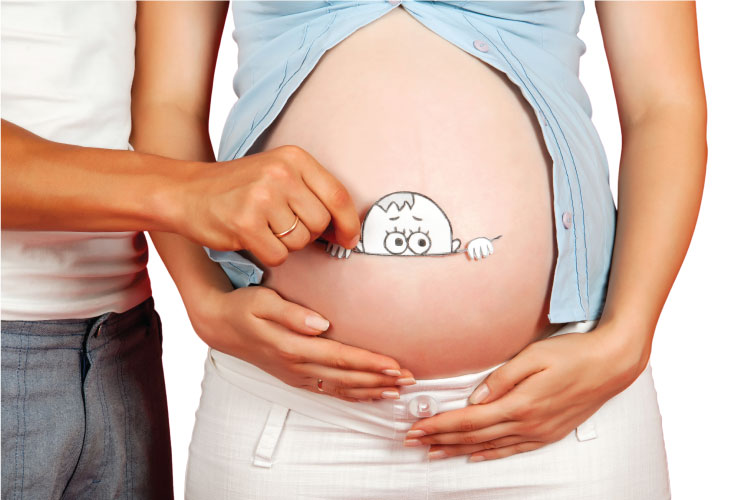Classified as a major surgical procedure, a cesarean section (C-section) in today’s modern times could take place not merely as an emergency option, but rather, as a pre-selected choice. Sometimes, women who are fully capable of giving birth naturally still choose to have a C-section. Find out why.
A C-section is childbirth that occurs through an incision in the abdominal wall and uterus rather than through the vagina. During the past few decades, more and more women have undergone this surgical procedure to give birth.
Pre-selected c-sections are usually recommended by doctors to women who are medically incapable of going through vaginal birth, or if the baby is in distress. In some cases, a woman may opt to have a pre-scheduled cesarean section, even if she is fully capable of giving birth naturally.
Here are some of the popular reasons why women might have to, or choose to have a C-section instead of vaginal birth.
When a C-section is necessary
In emergency cases, either the mother or baby is found to be in distress due to unprecedented complications, and the best solution will be to have a c-section. The following are some of such cases.
Uterine rupture
One in approximately 1,500 pregnant women may experience a condition called uterine rupture, where the uterus tears during pregnancy or labor. This can lead to hemorrhaging in the mother and it may also interfere with the unborn baby’s oxygen supply. Uterine rupture calls for an emergency cesarean section.
Breech position
When a fetus has settled into a breech position, vaginal delivery can still be done under certain circumstances. For the record, there are ways to turn the fetus around, but not without some expertise and of course, extra effort. However, in most cases today, the situation would call for a cesarean section, especially if the baby is in distress or has a prolapsed cord (which is more common in breech babies).
Placenta abruption
This is the separation of the placenta from the uterine lining that usually occurs in the third trimester. Approximately 1% of pregnant women will experience placental abruption. When this happens, there will be bleeding from the site of the separation accompanied by pain in the uterus. This separation can interfere with oxygen getting to the baby, and depending on the severity, an emergency cesarean will be called for.
Cord prolapse
This situation does not occur often, but when it does, an emergency cesarean is performed. Cord prolapse occurs when the umbilical cord slips through the cervix and protrudes from the vagina before the baby is born. When the uterus contracts, it causes pressure on the umbilical cord, which diminishes the blood flow to the baby.
Fetal distress
In some cases, as a pregnant mother’s due date nears, oxygen supply to the baby may deplete, causing distress to the unborn child. If fetal monitoring detects such a problem with the amount of oxygen that is reaching the baby, an emergency cesarean may be performed.
Genital herpes
If the mother has an active outbreak of genital herpes (diagnosed by a positive culture or actual lesions), a cesarean may be scheduled to prevent the baby from being exposed to the virus while passing through the birth canal.
Failure to progress in labor
A labor is considered failing to progress when the cervix has not dilated completely or the labor has slowed or stopped. Sometimes, the baby might even end up in a position which hinders a vaginal birth. Since the first phase of labor (0-4 centimeters dilation) is almost always slow, the decision is made depending on how the second phase of labor progresses (beyond 5 centimeters dilation).
Preselected c-section due to foreseen risks
In many cases, a cesarean section has to be scheduled beforehand in the best interest of the mother and/or baby. There could be a number of reasons for this.
Diabetes
If a pregnant mother develops gestational diabetes during her pregnancy or is diabetic, complications may arise during the time of delivery. Sometimes, the mother may even have a large baby. In any case, gestational diabetes increases the chances of having a cesarean delivery.
Multiple births
While twins may be safely delivered vaginally depending on their positions, estimated weights, and gestational age, it might not be the same with multiples of three or more. In cases of multiple births, a scheduled C-section would be the safest and most reliable decision.
Preeclampsia
This is a common but dangerous pregnancy condition involving high blood pressure. This condition could prevent the placenta from getting the proper amount of blood needed, decreasing oxygen flow to the baby. In many cases such as these, an earlier delivery via c-section is recommended to decrease possible risks to the baby.
Birth defects
If a baby has been diagnosed with a birth defect, a cesarean may be done to help reduce any further complications during delivery.
C-Section purely by choice
There used to be a time when C-sections were only performed as an emergency procedure. Today however it has evolved into an option and a woman may choose to have one. Here are some reasons why some women may opt to have a cesarean birth.
Feeling scared about labour pains
Many women are convinced that they will not be able to bear the inevitable labour pains. Horror stories of labor and birth are largely to blame for this fear, and the guarantee of anesthesia seems like a more attractive choice. Some also worry about the uncertainty of pain management during labor and delivery, for instance, if the epidural wears out, or if they don’t get a chance to even have one.
Wanting to choose the baby’s date of birth
With a planned C-section, one gets to pick a date to give birth from the time frame given by the doctor. There will be no need to wait for labor to begin, or even go through labor pains even. In a way, it would be nice to have an actual set date for your baby’s arrival, for by then, you would have surely had everything in place and ready to go. However, do keep in mind that things can get tricky for practically anyone during the third trimester and your baby could very well decide to debut before your chosen date.
To avoid vaginal tears
Many women who give birth vaginally do have some degree of tearing in the vagina or the perineum – the area between the vagina and the anus, but the vast majority of tears are either superficial tears that cause little discomfort or lacerations that may require stitches but usually heal well within a short time. Unfortunately, though this goes down as yet another reason why a woman may opt for a c-section instead of vaginal birth.
To feel more in control over their childbirth
With scheduled c-sections, many women have reported to feel more in control over an otherwise inherently unpredictable experience. They prefer to know when their baby will be born, so they can plan more easily for the weeks to come in terms of getting help from family, maternity leave, and other post-baby needs. As the trend of convenience grows, more and more women now find that it would be better to relax and enjoy those last few weeks instead of waiting anxiously for contractions to kick in and labor to begin, which can happen anytime, anywhere.
















